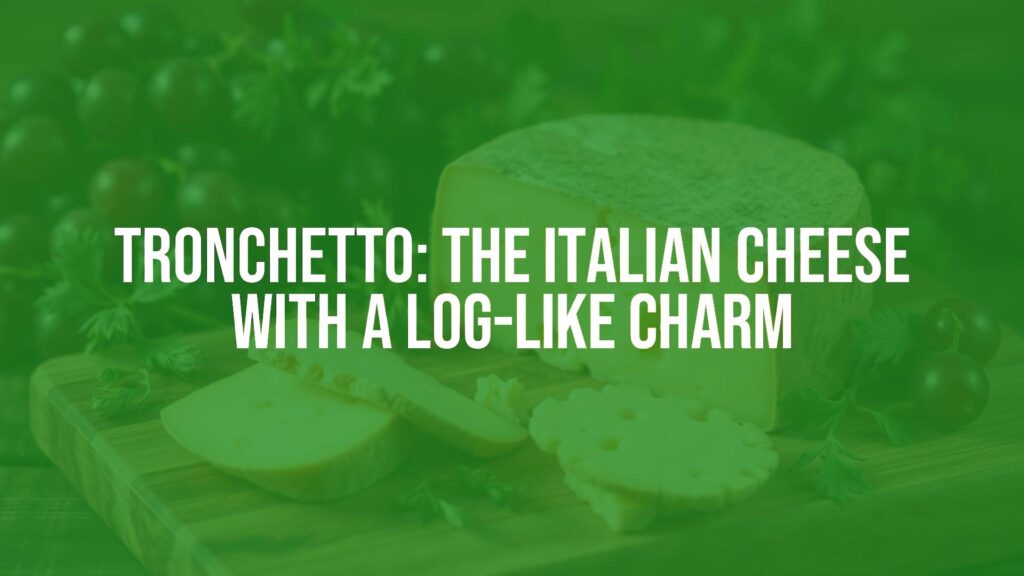Discovering Tronchetto: An Italian Cheese Tradition
Tronchetto is an intriguing Italian cheese recognized for its characteristic log shape and creamy interior. It stands out among Italy’s diverse cheese offerings, blending artisanal craftsmanship with the nuanced flavors for which Italian dairy is celebrated. The name “Tronchetto,” which means “little log” in Italian, refers not only to its appearance but also to the rustic traditions rooted in its production.
Defining Features of Tronchetto
At first glance, Tronchetto is notable for its elongated, cylindrical form, often with a thin, wrinkled rind. Inside, the texture ranges from dense and creamy near the center to softer, almost runny at the edges, depending on maturation. Tronchetto is typically crafted from goat’s milk, imparting a gently tangy, earthy flavor balanced by a delicate sweetness. Aromatic, fresh, and versatile, it can evoke subtle notes of grass and wild herbs from the animals’ diet in its region of origin.
Origin and Evolution
The cheese has its roots in northern Italy, particularly in the regions of Lombardy and Piedmont, where goat’s milk cheeses are a time-honored artisanal specialty. Tronchetto’s method draws on traditional techniques of slow acidification and careful aging, passed down through generations. Its signature shape made it easy to store and transport for families who would produce cheese from their own goats in mountain villages.
Production and Maturation
Tronchetto is generally handcrafted by small dairies or farmstead cheesemakers, who employ fresh goat’s milk, rennet, and a short list of natural ingredients. The curds are delicately ladled into molds to achieve the log shape, then allowed to gently drain. After being salted, the cheese undergoes brief aging—ranging from a few days to several weeks—during which it develops its characteristic rind and flavors. Variations in aging yield different textural and flavor qualities, from firmer and fresher to intensely creamy with an assertive tang.
Cultural Significance and Enjoyment
Tronchetto plays a cherished role in local food culture, reflecting Italy’s broader appreciation for artisanal, seasonal cheeses. In rural communities, it often features in festive gatherings and market days, where cheesemakers share their newest batches. This cheese is celebrated as a symbol of craftsmanship and agricultural heritage, embodying the connection between land, animal, and table.
Classic Pairings and Serving Ideas
Tronchetto’s creamy profile pairs beautifully with rustic country breads, crusty baguettes, or crisp crackers. It also complements fresh fruits—like figs, grapes, or pears—whose sweetness offsets the cheese’s delicate tang. Italian honeys and a drizzle of extra virgin olive oil highlight its subtle flavors, while nuts add textural contrast. With its vibrant acidity, Tronchetto works well alongside light-bodied white wines, such as a Gavi or Soave, or a dry sparkling Prosecco. Traditionally, it might be set out as part of an antipasto board, often accompanied by cured meats and marinated vegetables.
Regional Variations
While goat’s milk is the most common base, variations of Tronchetto may include blends with cow’s milk, yielding a milder profile. Some affineurs experiment with ash-rubbed rinds or herb infusions, imparting additional layers of aroma and appearance. The core elements, however—artisanal methods, log shape, and creamy texture—remain consistent across local interpretations.
Serving Tips
For the fullest experience, allow Tronchetto to warm to room temperature before serving. Slice rounds from the log just before enjoying to maintain its texture and freshness. This cheese is equally at home on a simple picnic as at a refined cheese tasting, making it a seasonal favorite among those who appreciate the depth and diversity of Italian dairy traditions.

